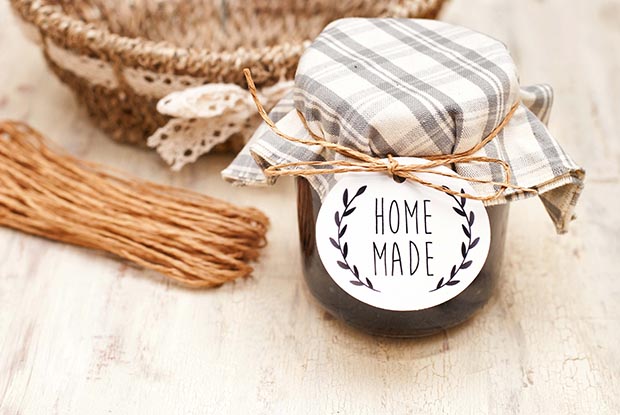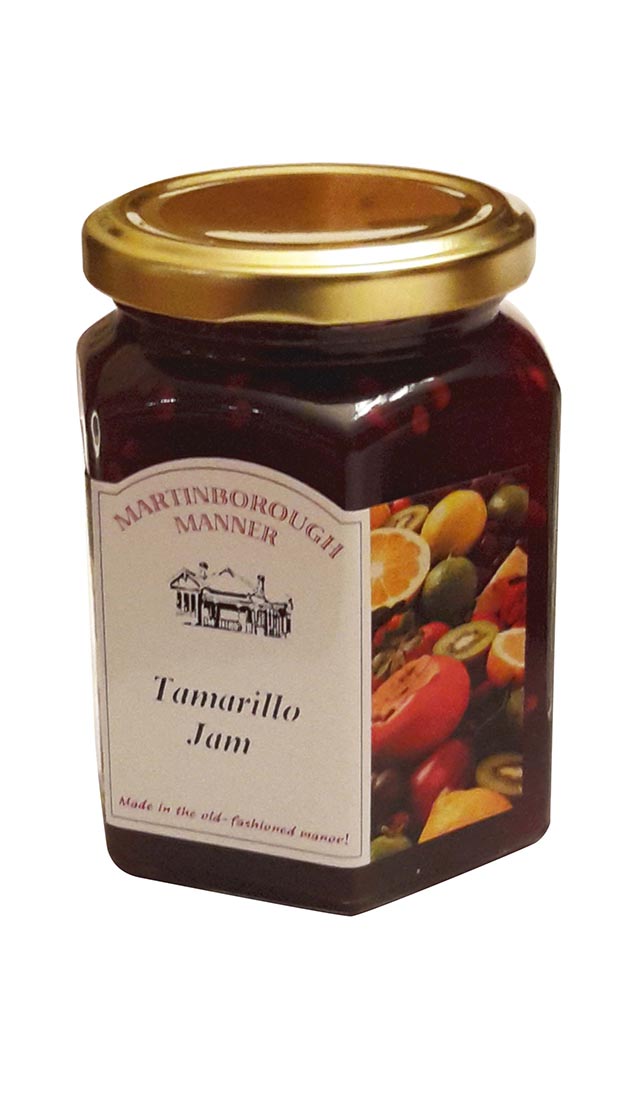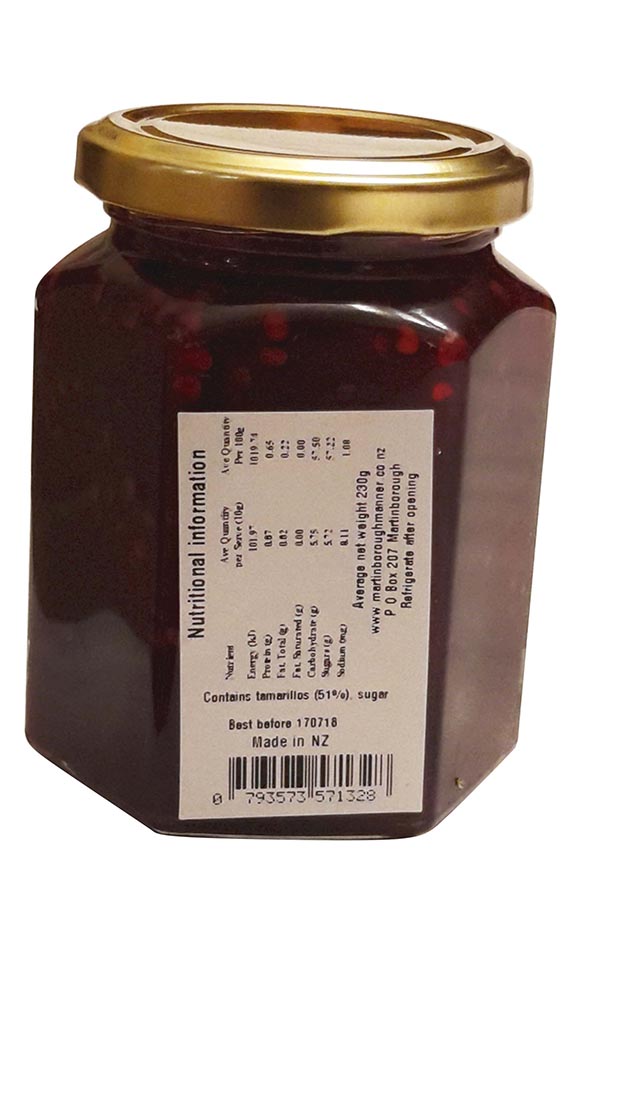How to turn jam-making and preserving into a business

If you’re a dab hand at making jams and preserves, you could consider selling your homemade goods.
Words: Jane Wrigglesworth
Who: Bill & Penelope de Boer
Land: 8ha
Where: Martinborough, 80km north-east of Wellington
What: Martinborough Manner preserves, marmalade, and jams
Web: www.martinboroughmanner.co.nz
There are strict rules and it’s hard work. But if you follow the correct food safety practices, making jams and preserves can be a flavoursome way to supplement your block’s income.
By day, Bill de Boer is a refrigeration technician. Penelope de Boer is a math lecturer to engineers at Wellington Institute of Technology. But in their spare time they are masters of making jams, marmalade, and other preserves, using fruit from the 430 trees, berry plants and currant bushes they planted on what was a bare block back in 2006. They sell their end product to the local supermarket, to small specialty shops, and online. Their craft grew as a result of learning on the job.
“Our business evolved rather than was planned,” says Penelope. “We initially bought six acres with a view to planting it all in garden and orchard. My mother kept asking what we were going to do with all the fruit. I kept telling her that I had four adult children and that we would eat it. She kept telling me how much each plum tree, for example, would produce – and we had eight at the time – and she kept asking what we would do with all the fruit. I told her we would sell it.”
They did sell the fruit, but when they did the sums, they realised that if they were to make any kind of business out of it, they would need to have some sort of value-added product rather than selling just straight fruit.
“While we were building the house, we put in a large commercial kitchen to make jams and preserves,” says Penelope. “We started out hiring a kitchen, but that had problems. We had to travel from Martinborough to Featherston and we could have the kitchen for four hours once a week. It was a military exercise to get everything – and I mean everything – ready to take with us. Numerous times we would find that we had forgotten something vital, like lids or jars.”

They needed to sort out the labelling too. “Labelling is an important feature,” says Penelope. “Selling anywhere requires labels that provide certain information, though legally things are a little easier if you simply sell directly to your customers. The info labels only require a list of contents, a warning about any allergens, a best-before date and the address of the producer. But because we sell ours to an outlet, we need proper nutritional information panels on the backs of the jars.”
Conveniently, Food Standards provides an online calculator for sellers to create their own nutritional information panels. You simply enter your weighed-in ingredients, weigh your net output, and the calculator does the rest.
The couple also worked out it was economic to become printers too. “We got quotes to have our labels pre-printed but it was cheaper for us to buy a printer and have the background of the labels printed and for us to add in the type of jam or chutney. It gives mus the freedom to change recipes, or make different varieties as the mood or season takes us.”
The cheaper the label, the harder it is to get them off the jar or bottle, so the couple had to choose carefully. “Ours are really expensive labels, but we also wanted some that wouldn’t go yucky when jam dribbled down the outside.”
Jars can be recycled, provided they are sterilised, but lids cannot be reused. The means unless you choose your jars carefully, the lids that you buy later may not fit. “Arthur Holmes in Wellington is the best company to deal with for lids and jars,” says Penelope. “We do recycle our own jars – jars that we have bought – and buy new lids.”
When it comes to selling, the options are roadside stalls, farmers’ markets, or retail outlets. Initially, Bill and Penelope set themselves up at several markets.
“At one stage we were travelling to five farmers’ markets between Bill and I every week, but the fuel costs became horrendous and there was no time to make the product or grow the fruit and vegetables,” says Penelope.
“We no longer go to many markets as we are trying to be self-sufficient and sustaining in what we do on our farm, growing everything from meat through eggs, milk and cheese, fruit and vegetables, and this in itself takes a huge amount of work, given that both of us are off-farm during the weekdays. We’ve even started very successfully sprouting wheat and grinding our own flour. Yum!”
If you wish to sell to larger retailers, supermarket chains generally require more in the line of processing, like the addition of acidity regulators. Acidity regulators are food additives used to change or maintain pH to allow for a longer shelf life. They can be organic or mineral acids, bases, neutralising agents, or buffering agents. If you look on the information panel of a supermarket-bought jam, you might see citric acid, a natural preservative that is used as an acidity regulator.

“At that stage, we gave up going down the supermarket chain route,” says Penelope. “The acidity regulator stuff is more than the law requires and then takes you out of the league of an artisan producer. I imagine it would require testing, at a cost. Then living in the country, as most of us do, there are transport costs of getting samples to the testers or auditors.”
There are other potential costs to be wary of too. “Many supermarkets also want you to pay for shelf space and advertising and they will cut you down on price. We are lucky with one of our local supermarkets, in that it is locally owned by a family that has been in Martinborough for generations. We used to supply to several, but we were ending up losing money on every jar with transport costs and the costs the supermarkets wished to impose.”
Packaging is another consideration if you plan to transport your products. “We did have boxes printed but now use plain cartons and use a jar label as identification.”
The whole process for the de Boers has been an ongoing learning experience, but they did have a vision when they set out on their venture.
“For us, making jams and chutneys etc is part of a long-term plan. We run farm tours, provide farm-stay accommodation, sell lambs, piglets, eggs and fruit and have a small shop on site, and this will become a bigger part of our lives once we retire. We both enjoy it as an extension of what we do for ourselves – as a separate preserving exercise – and regard it as an add-on, particularly when we get a bus full of people doing a farm tour.”
PENELOPE’S TOP 5 TIPS FOR STARTING A HOME FOOD BUSINESS
1. Do the numbers properly. Have a plan. Is this to be your only job or is it to supplement your income? What are your expectations?
2. Location is important and size of nearby towns/cities.
3. Keep it real – accurately cost in the land, the rates, the power, the water if necessary, the ingredients and your time, including selling time.
4. It’s difficult to make enough on a small scale without turning it into a factory, unless you have your own shop (check council regulations on that).
5. Realise that to make a reasonable amount of money, if you are growing the ingredients as well, that it is a seven-day-a-week job. “We enjoy it, are proud of our product,” says Penelope. “But both of us still work nine days a week off-farm between us.”
6 THINGS YOU NEED TO DO TO BE LEGAL
• Food sellers (any person or business selling food for human consumption) need to meet the requirements of the Food Act 2014 and the Food Regulations 2015.
• If you have a food premise, you need to be registered with your local council.
• Food businesses preparing food for sale in a home kitchen can do so as long as they:
– Comply with the rules for home businesses;
– Are registered under a Food Control Plan or a National Programme;
– Have a Food Safety Plan with Ministry for Primary Industries.
• You will also need to meet all other legal requirements such as home-based area district plans, bylaws and other relevant acts and regulations.
• Consult your local council’s building and planning advisors before starting a commercial kitchen at home.
• In most situations, you need a trading/hawker’s licence if you want to sell in a public place for private gain. In some situations this is covered by farmers’ markets themselves. Contact your local council and farmers’ markets for more information.
RESOURCES
Food Standards: www.foodstandards.govt.nz
Ministry for Primary Industries: www.mpi.govt.nz
READ MORE
The Damson Collection’s Margie Chambers shares her tips on starting a jam business
Love this story? Subscribe now!
 This article first appeared in NZ Lifestyle Block Magazine.
This article first appeared in NZ Lifestyle Block Magazine.
